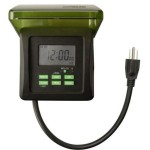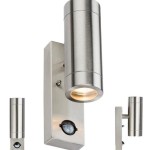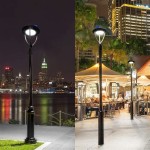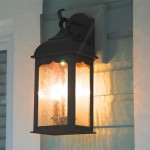How To Install An Outdoor Junction Box
Outdoor junction boxes are essential components in any electrical wiring system that extends outdoors. They serve as a protective enclosure for electrical connections, preventing damage from weather elements, and ensuring the safety of the wiring and equipment. Installing an outdoor junction box correctly is crucial for reliable electrical performance and safety. This guide will provide step-by-step instructions on how to install an outdoor junction box effectively.
1. Planning and Preparation
Before starting the installation, it is essential to plan and gather the necessary tools and materials. This includes:
- Outdoor junction box: Choose a box with a suitable size and weather-resistant rating (NEMA rating) for your specific application.
- Wire: Ensure the wire used is compatible with the electrical load and the outdoor environment. Use weatherproof wire with a suitable gauge.
- Wire strippers: For removing insulation from the wire ends.
- Wire cutters: For cutting wire to the desired length.
- Crimping tool: For securing wire connectors.
- Screwdriver: For fastening the junction box to the surface.
- Waterproof sealant: For sealing any potential entry points for water and moisture.
- Electrical tape: For securing connections and providing additional insulation.
- Voltage tester: For verifying the absence of electricity before and during the installation process.
Once you have gathered the materials, it is essential to confirm that the location chosen for the junction box is suitable. The location should be easily accessible for future maintenance or repairs, away from potential water damage sources, and protected from direct sunlight. Check your local building codes and regulations for specific requirements regarding outdoor junction box installations.
2. Mounting the Junction Box
The next step is to mount the junction box securely to the surface. This may involve drilling holes and using screws, or using a mounting bracket provided with the junction box.
- Locate the mounting point: Mark the desired location for the junction box on the surface, keeping in mind accessibility, proximity to the electrical source, and any other relevant considerations.
- Drill pilot holes: If necessary, drill pilot holes at the marked location to guide the screws during installation. Ensure the holes match the screw size and are deep enough to accommodate the screws without damaging the surface.
- Secure the junction box: Use appropriate screws or fasteners to securely mount the junction box to the surface. Ensure the box is level and flush with the surface. Tighten the screws sufficiently to ensure a stable and secure installation.
3. Wiring Connections
After mounting the junction box, it's time to connect the wires. This requires carefully stripping the wire insulation and connecting the wire to the appropriate terminals. The wire connections must be secure and properly insulated to prevent shorts or electrical hazards. Always follow these steps when wiring a junction box:
- Turn off the power: Before working on any electrical wiring, always disconnect the power supply to the circuit. Use a voltage tester to ensure the circuit is de-energized. Follow proper safety procedures at all times.
- Strip the wire insulation: Use wire strippers to remove the insulation from the wire ends to expose the bare copper conductor. The amount of insulation to remove will depend on the specific type of connector used in the junction box.
- Connect the wires: Connect the stripped wire ends to the appropriate terminals inside the junction box. Use wire connectors that are compatible with the type of wire used. Ensure the connections are secure and free from loose wires.
- Secure the connections: Once the wires are connected, use electrical tape to wrap around the connections and provide additional insulation. This prevents moisture and debris from compromising the connections.
- Ensure proper grounding: Outdoor junction boxes must have a proper ground connection. Ensure that the ground wire is connected to the green terminal inside the junction box. This connection ensures a safe path for electricity to flow in case of a fault.
- Test the connection: After completing the wiring, restore the power supply and use a voltage tester to verify the connection is working properly. Ensure the voltage reading matches the expected voltage for the circuit.
The specific wiring configurations in a junction box might vary depending on the electrical circuit and the devices it connects. Always consult a qualified electrician for any complex wiring tasks or if you're unsure about the wiring configuration.
4. Sealing and Finishing
The final step involves sealing the junction box to prevent water and moisture ingress. This is particularly important for outdoor applications, where the box is exposed to weather elements. Additionally, ensure the cover of the junction box is properly installed and secured.
- Apply sealant: Use a waterproof sealant around the edges of the cover and any other potential entry points for water and moisture. Apply the sealant generously and ensure it creates a continuous seal.
- Install the cover: Secure the cover of the junction box using the fasteners provided. Ensure the cover is properly aligned and fits snugly against the box.
- Inspect the installation: Once the cover is installed, carefully inspect the installation for any leaks or loose connections. Ensure all components are securely fastened and the box is watertight.
By following these steps, you can successfully install an outdoor junction box and ensure the safety and reliability of your outdoor electrical system. Remember to consult with a qualified electrician for any complex wiring tasks or if you have doubts about the installation process.
How Do I Install Outdoor Junction Box Diy Home Improvement Forum

How To Install An Outdoor Electrical Remodel

How To Install An Exterior Electrical Box For A Light Fixture On The Wood Siding
How To Seal An Outdoor Electrical Box Quora

How To Add An Outdoor Electrical Diy

Outdoor Junction Box For Armoured Cable 1st Electricians
Should An Electrical Junction Box For Outdoor Fixture Be Flush With The Siding Or Plywood Sheathing Underneath Quora

How To Properly Install An Exterior Gfci

25 Junction Box Outdoor Waterproof Electrical 3 Way Plug Line Plastic External M25 Coaxial Wire Connector Electric Power Cord Boxes Suitable For Lights Landscape Lighting 3way Intshade

Install An Electrical Junction Box With Three Phase Wiring At Outdoor Garden
Related Posts







